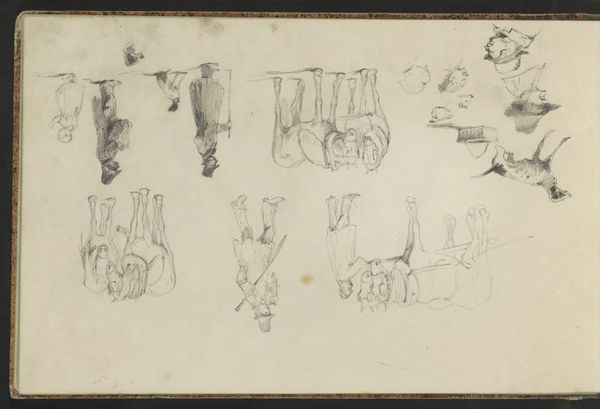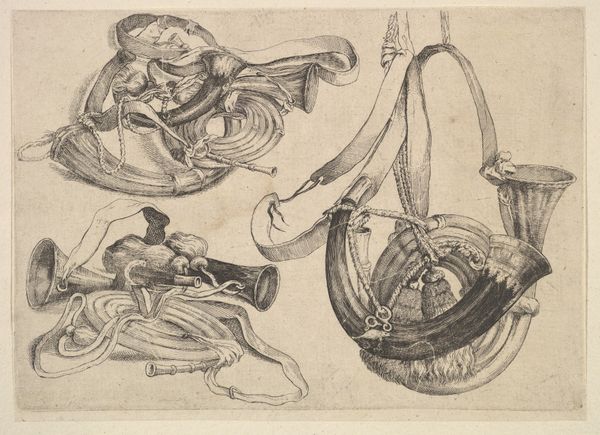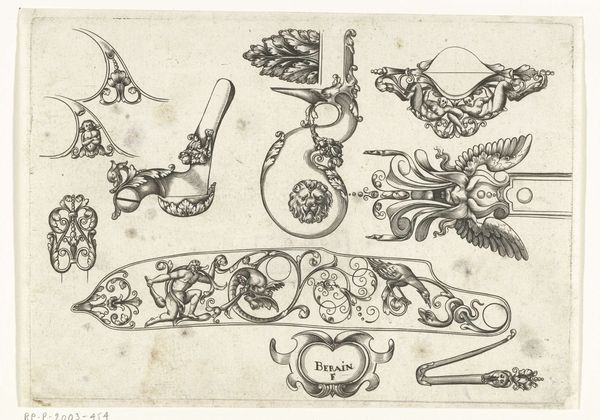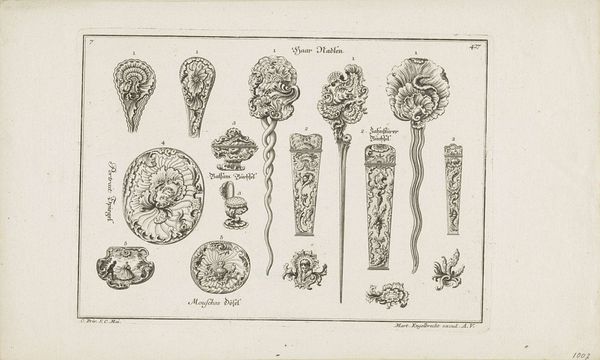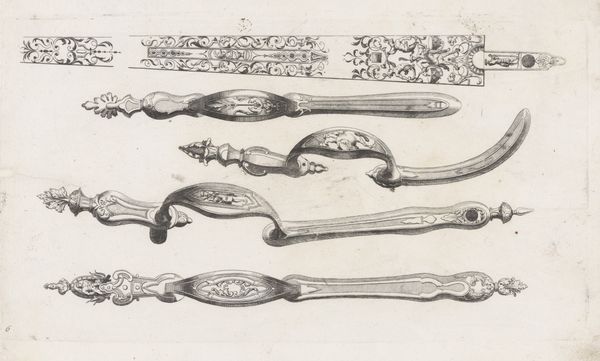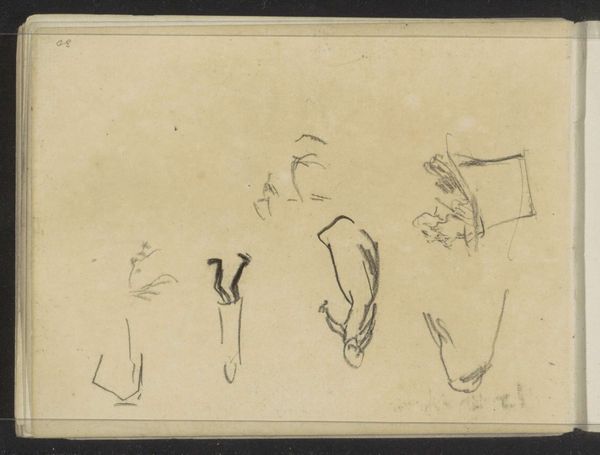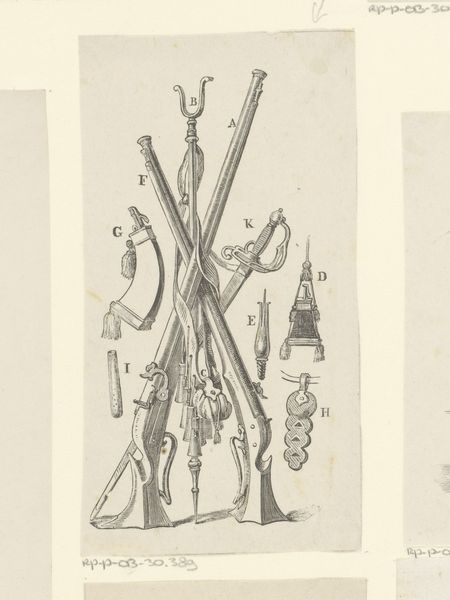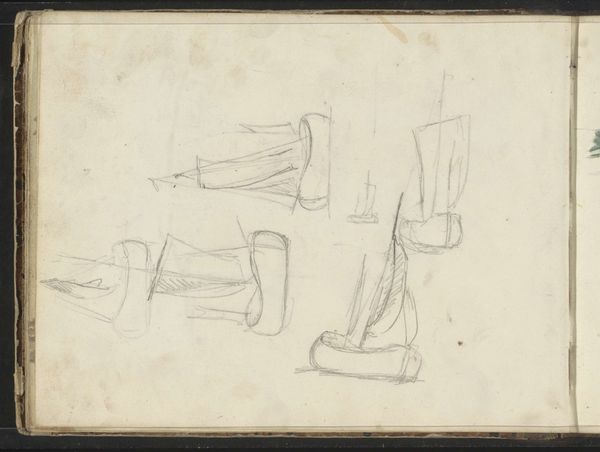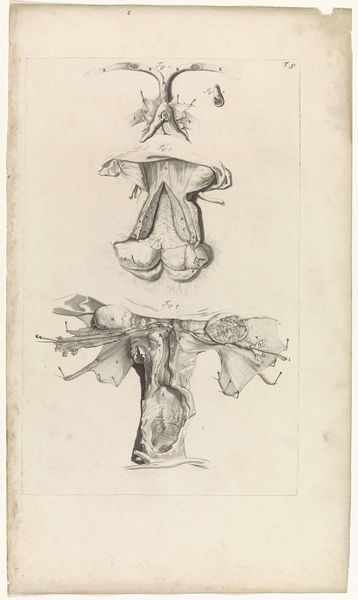
drawing, print, engraving
#
drawing
# print
#
engraving
Dimensions: Plate: 5 1/2 × 7 13/16 in. (14 × 19.9 cm) Sheet: 5 9/16 × 7 7/8 in. (14.2 × 20 cm)
Copyright: Public Domain
Curator: This engraving from 1647 by Wenceslaus Hollar, titled "Quivers and hunting horns," immediately strikes me with its incredibly precise line work. The way the artist captures the textures of the leather and the gleam of the metal is quite remarkable, don’t you think? Editor: Yes, there is a certain elegance to its rendering of forms. It feels somewhat austere, but meticulously conceived, and gives a curious feeling. The light feels evenly distributed. What is the broader socio-historical meaning of this still life? Curator: Well, at face value, it simply shows hunting equipment. But when we examine the broader context, these objects point to a culture steeped in tradition, ritual, and social hierarchy. Hunting in 17th-century Europe was heavily coded; it was predominantly an aristocratic pastime connected to power, land ownership, and virility. Editor: That adds a dimension. Seeing it only as a collection of objects does a disservice. Each piece carries weight. How the horns loop around ropes with thick knots, compared with the rigidity of the tightly packed arrows—it suggests two distinct states or potential actions: waiting versus about to be deployed. Is the arrangement significant? Curator: I believe so. The orderly display indicates pride and careful consideration, an intention beyond simple practicality. One must acknowledge that these things aren't placed by chance: it speaks to identity construction. This engraving serves as a representation, perhaps aspiration, and the tools, essentially weaponry, are central to expressing authority and class privilege. Editor: The symmetry created from these arrangements brings order from the natural world through calculated forms. But if Hollar created such crisp forms, what exactly did it reflect back to the social gaze, given that hierarchies are rarely still or clean? Curator: The visual clarity provided a constructed, even idealized, image, designed to cement existing societal norms by presenting them in an orderly fashion. Hollar could not escape his own situatedness to bring an authentic portrayal as someone who occupies such position; his representation therefore further legitimizes established ways, or at least avoids disrupting them directly. Editor: So, from the neatness, an assertion? Curator: Yes. By examining an artistic form we uncover historical power dynamics woven in plain sight. The aesthetics are inseparable from their ideological roles, shaping as they reflect society, and in both material senses! Editor: Indeed. Seeing "Quivers and Hunting Horns" from purely a formal standpoint can feel limited after this. A sharp visual rendering of both a social performance and symbolic representation all contained in a hanging still life. Thank you.
Comments
No comments
Be the first to comment and join the conversation on the ultimate creative platform.

